Pelargonium Elnaryds: description and cultivation
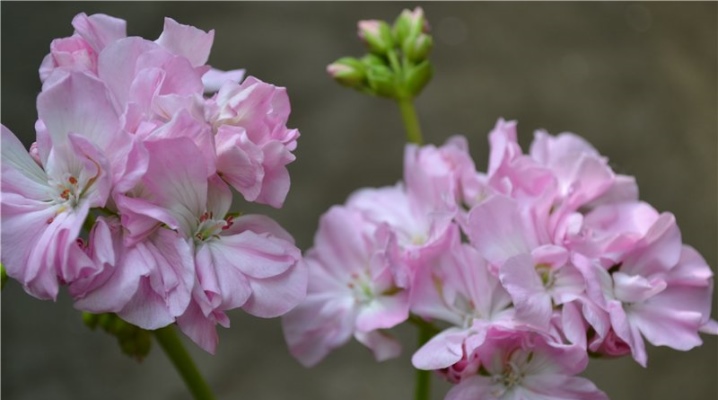
Among the variety of ornamental geranium plants, the leading place is occupied by pelargonium. She fell in love with many flower growers for her short stature, curly and lush bushes, abundantly dotted with buds, as well as for a long flowering period. This herbaceous culture will be discussed in the article.
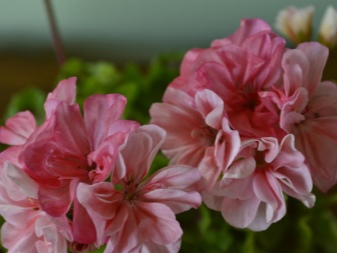

Peculiarities
This flowering plant was first discovered on the African continent and in the southern regions of Asia. Later they began to grow it in different countries of the world.
The culture is endowed with stems that can be either creeping on the ground or standing upright. The stems themselves are short, for this reason, pelargonium is ranked among the genus of dwarf plants.
Leaves differ in a variety of shapes. They are:
- common and feathery elements;
- leaflets rough to the touch, like fingers.
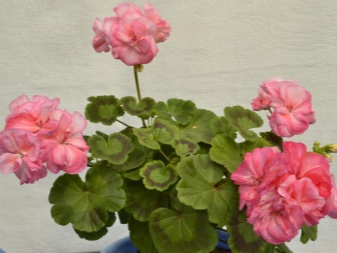
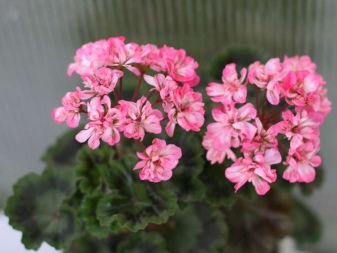
Peduncles grow in the shape of a ball, they are very thick and lush. Pelargonium flowers are small, the petals are subdivided into double, simple, and have a curved configuration. The plant has a number of essential oils in its composition, due to this it is endowed with a bright citrus aroma. He has a fairly wide range of colors. The buds can be delicate pinks and rich hues such as coral. Pelargonium is grown in pots, flowerpots, containers, pots and other containers.
You can decorate your garden, terrace or balcony with pelargonium, provided that at the slightest drop in air temperature to +5.7 degrees Celsius, the flowers will be transferred to a warm room. Usually on the street, pelargonium is planted in flowerpots. It cannot withstand drafts and gusty winds.
If your flower grows at home, then choose rooms for it that face south with good lighting.
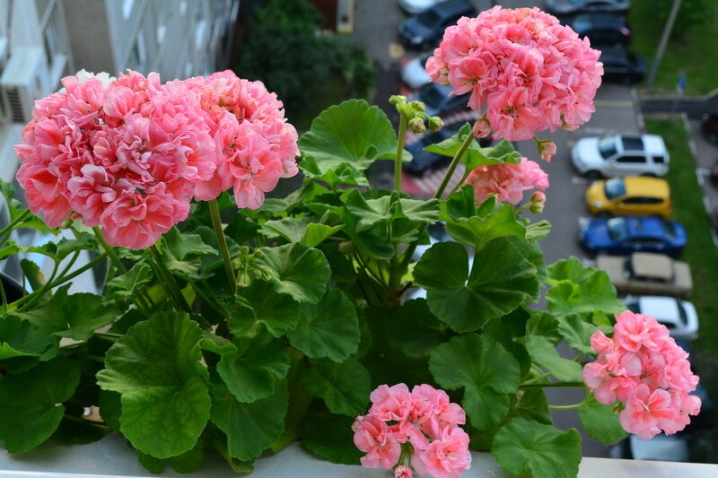
Views
Breeders have bred a large number of different varieties and hybrids of the plant. Pelargonium is divided into groups.
- Zonal. It includes up to hundreds of tall and dwarf bushes. Among the decorative flowers, the most popular is Elnaryds Alexis pelargonium.
- Royal... She has a high stem, dense bushes with double and semi-double peduncles are concentrated on it.
- The crop can be an ivy plant. It got its name for the peculiar shape of the leaves, similar to ivy, and the long stems that fall along the sides of the container in which the flower is planted. Inflorescences are lush and dense clusters.
- Pelargonium is also divided into succulent and scented crops.
Succulent species are characterized by thick, curved stems with small leaves and large flowers.
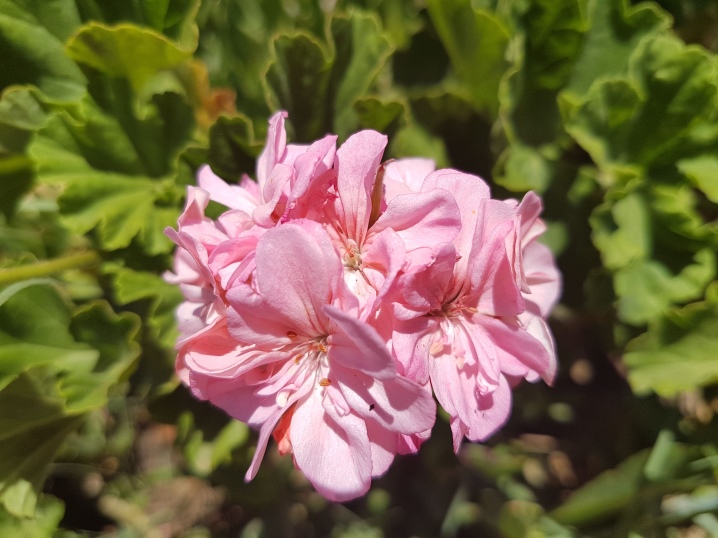
The dwarf group includes several dozen pelargoniums, popular among flower growers. These include: Annelie, Hilda, Otto, Bente, Gusten, Lilian, Olivia, Ebon, Ljuvliga, Julia, Jazz, Alizia, Pippi, Rasken, Clarissa, Lina, Lady Molly, Windcatcher, Maestro, One of a Kind and many other names.
Pelargonium Elnaryds Alexis has proven itself well. It is a dwarf bush with bright green leaves and white, pink blotches of flowers. The shape of the flowers is very beautiful, they look like lace. This pelargonium blooms early and for a long time pleases the eye with its abundant peduncles.
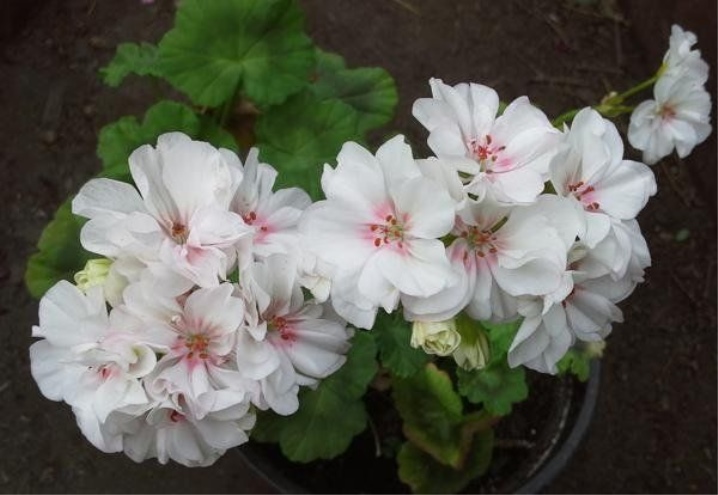
Many indoor plant lovers grow at home pelargonium Annelie. It is a bush with white-pink wavy and double buds. The flowers are of medium shape, the leaves are dark in color. It begins to bloom very early, in late May or early June.

Hilda variety very popular with florists. Dwarf bush with dark leaves. Its peduncles are dense, have a double shade. The white tone towards the center of the flower smoothly turns into salmon color.The buds are terry and rich in structure.
This dwarf tolerates the hot season well and blooms for a long time.
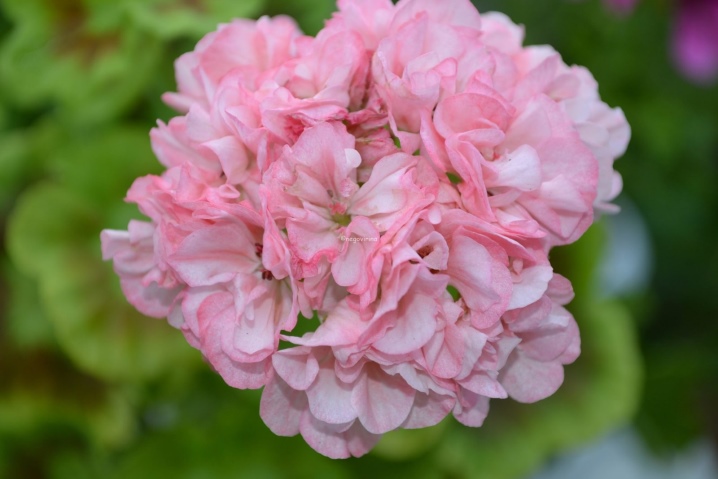
In flowerpots, as a decoration for gazebos or terraces, they are planted pelargonium Otto. She is endowed with double orange flowers, turning into a salmon tone. In the process of growth, large hats of flowers are formed. The plant reaches 8-10 cm in height. Blooms all summer from May.
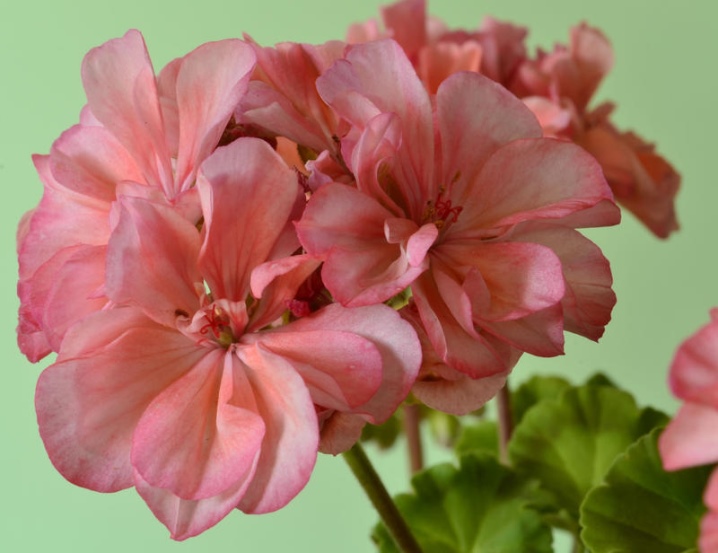
Elnaryds Bente is a relatively new flower, recently bred by Swedish breeders. It belongs to the type of zonal pelargonium. It rises in height by 8-10 cm. The inflorescences are very beautiful, double and lush in the middle. Most often, they are of a delicate apricot color, turning into a rich shade, similar to red sand. Pelargonium blooms in May.
All summer you can admire the noble flower stalks of this bush, until the end of September. At this time, flowering ends.
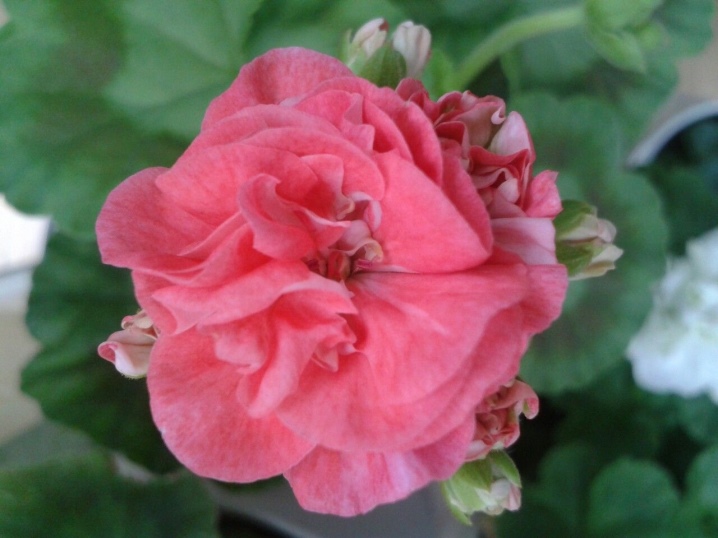
Landing
Since the culture is mainly dwarf, the pots for planting should be purchased small so that the main emphasis during the growth of the plant is not on its root part, but on the shoot located above the ground. Land for planting should contain some sand and peat.
The seeds are planted in peat boxes. The seedlings should be kept in a room with an air temperature not exceeding +20 degrees Celsius. Usually, sprouts appear 21 days after planting. During the entire period, it is necessary to irrigate by irrigation from a sprayer.
Seedlings that have grown by summer require planting in the ground in early May. They are recommended to be buried in the soil no more than 40 mm. The planted shoot must be lightly tamped with your fingers, and then watered with water.
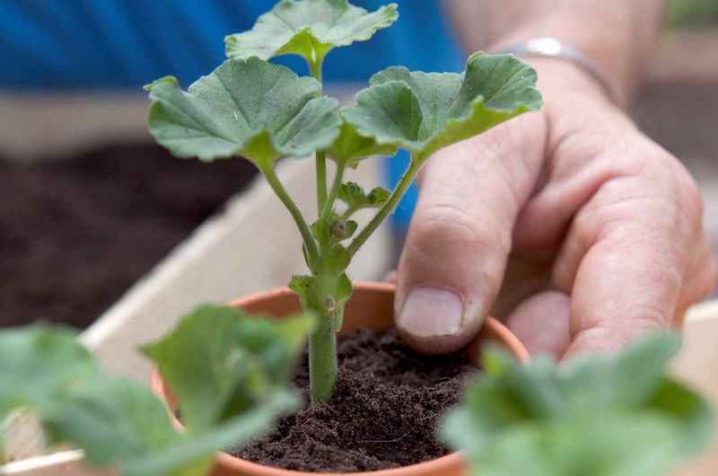
Care
After planting the plant, it must be watered every 2-3 days. The soil should not be too wet, but it should not be dry either.
The soil needs to be fertilized periodically. Flower shops sell formulations containing nitrogen, potassium and phosphorus. They should be fed to the plant during its growing season, but no more than 2 times a month.
When a sufficient number of leaves and flowers have formed on the bushes, you can form a "hat" from the peduncle, pinch the leaves so that the bush grows wide and is an elegant, lush peduncle.
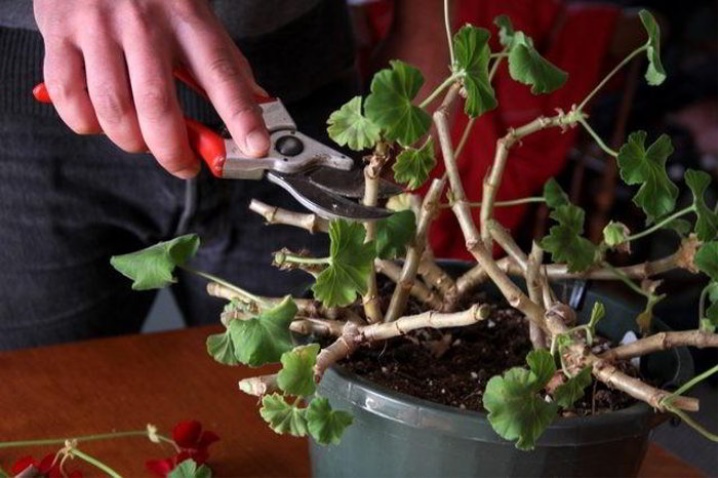
During the summer, pelargonium should receive the maximum amount of fresh air for good growth. It is recommended to take it out on balconies, terraces, in a garden under trees, in places protected from direct sunlight. The flower is reluctant to tolerate temperatures above +25 degrees Celsius.

In winter, pelargonium bushes are recommended to be kept in cool rooms with a temperature not exceeding +13 degrees Celsius. Watering the crop at this time of the year should be no more than twice a month.
A flower transplant is performed once every 3 years. This is done in the spring, at the end of March or in April. By June, the plant takes root in a new place, blooms and pleases with its beautiful buds all summer.

For information on how to grow pelargonium, see the next video.































The comment was sent successfully.